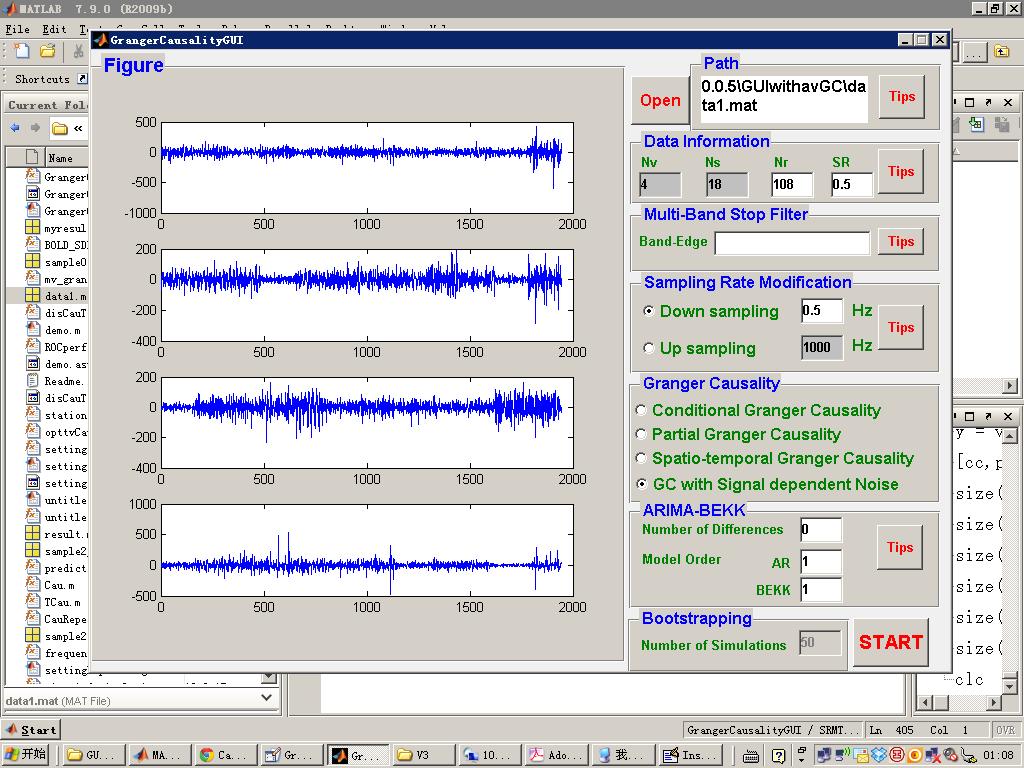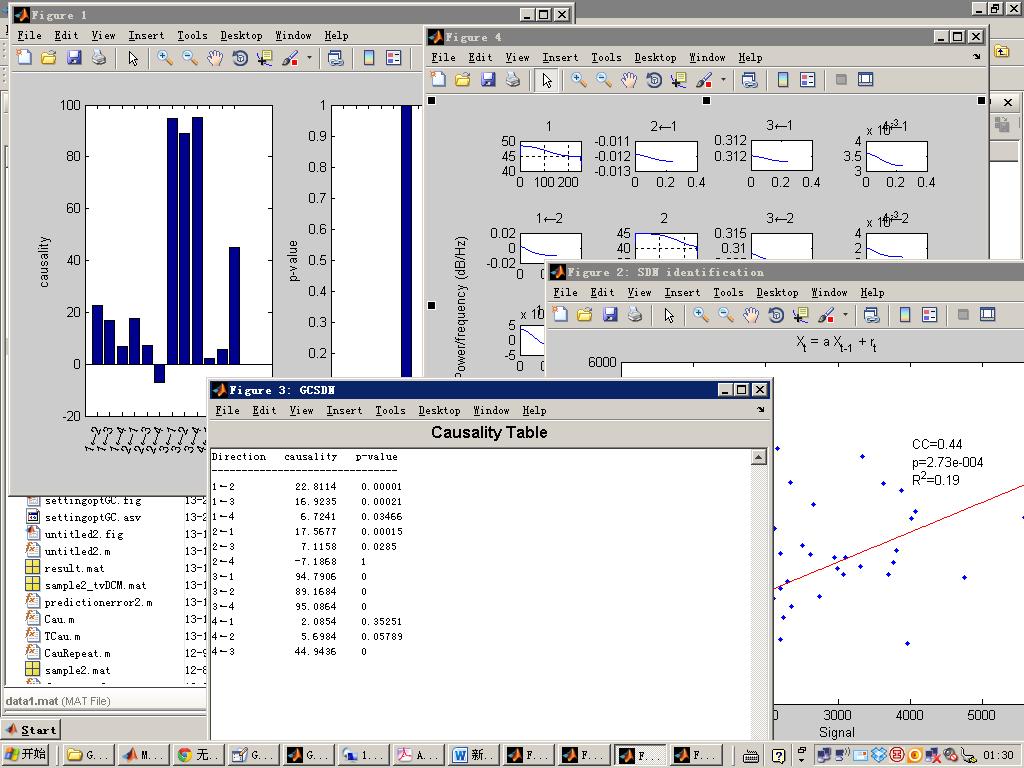Estimating Granger Causality
Thank you for using this package for Granger causality estimation --[Download V1.0 (MATLAB2008 compatible)] [Download V2.0 (MATLAB2014 compatible)]
.Fig. 1. An example of Granger causality estimated from fMRI data [3].
EASY TO RUN
This is a Matlab GUI for estimating Granger causatliy on time series data set. It is still under testing, so any feedback from you would be more than welcome. Free for acadamic use only. In the current working path in MatLab, the GUI is avaliable if you type in
GrangerCausalityGUI
Then the use of this toolbox should be straightforward.
METHODS
Four different methods are provided to estimate Granger causality, including Conditional Granger Causality, Partial Granger Causality, spatio-temporal Granger Causality, and Granger causality with signal-dependent noise.
In spatio-temporal Granger causality (stGC), we need to specify if we want to use
1) optimal time window division on the time series to estimate the averaged GC across time windows, or
2) equal time windows with fixed window numbers or
3) no time window division.
We also need to specify the spatial resolution. For example, if we are calculating the GC between two ROIs with m and n voxles, respectively. We can specify the voxels for each ROI in the GUI and compute the GC between all pairs of voxels from two ROIs. Then, the GC between these two ROIs can be estimated by the mean GC among all paris of voxels.
In Granger causality with signal-dependent noise (GCSDN), we need to specify the model order in variance, ie. BEKK order. The frequency domain result is also avialable for GCSDN. The function for detecting the existence of SDN has also been included in this package, but it will work for time series data with repeat blocks only.
Fig. 2. A screenshot of the toolbox.
RESULTS
The results are shown in tables and figures. The results are also saved in 'myresult.mat' in the current working path.
For temporal GC
causMatrix(j,k) ----causality from k-th time series to j-th time series
pvalMatrix(j,k) ----p-value of estimated causality, if avaliable
TtimeCau{j,k} ----causality from k-th time series to j-th time series in each time window
For spatial GC and spatio-temporal GC
causMatrix(j,k) ----mean causality from k-th ROI to j-th ROI, which is averaged over all pairs of voxels from two ROIs
stdMatrix(j,k) ----std in the estimated causality
For conditional and partial GC
meanArray(j,k) ----mean causality from k-th time series to j-th time series given by bootstrap
varArray(j,k) ----std causality from k-th time series to j-th time series given by bootstrap
For GC with signal-dependent noise
TcausMatrix(j,k) --- causality from k-th time series to j-th by GCSDN
TpvalMatrix(j,k) --- p-value of estimated causality, if avaliable
Fig. 3. A screenshot of the output.
CONTACT
This package is developed by Jianfeng Feng group, in accompany of papers
[1] Spatio-temporal Granger causality: a new framework. NeuroImage, 2013, vol 79: 241--263.
[2] Uncovering interactions in the frequence domain. PLoS Comput Biol 2008, 4(5): e1000087.
[3] Attention-dependent modulation of cortical taste circuits revealed by Granger causality with signal-dependent noise PLoS Comput Biol 2013,9(10):e1003265.
[4] Using real-time fMRI to influence differential effective connectivity in the adolescent emotion regulation network, NeuroImage, 2015, in press.
[5] Failed cooperative, but not competitive, interaction between large-scale brain networks impairs working memory in schizophrenia,Psychological Medicine, 2015, accepted.
[6] The Functional Architecture of the Brain Underlies Strategic Deception in Impression Management Front. Hum. Neurosci., 02 November 2017
-----------------------------------------------------------
e-mail: mrqiangluo@gmail.com, last updated by Qiang Luo at 19:30 Jan/14/2018.


